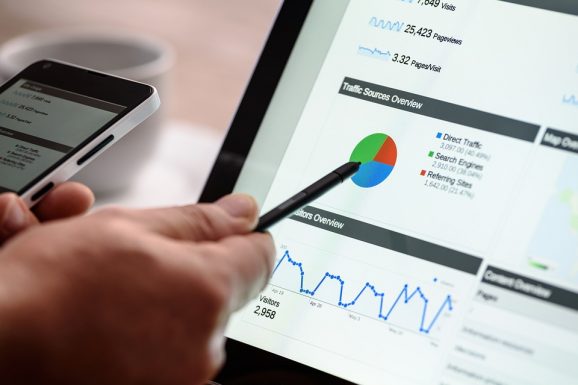7 Pros and 7 Cons of Foldable Phones
Foldable phones are a new trend in the smartphone market that offers some unique advantages and disadvantages over regular phones. Here are some of the pros and cons of foldable phones, along with some examples of phone models and their features
Pros of foldable phones:
Facilitates multitasking:
Foldable phones have larger screens that can run multiple apps at the same time, or allow drag-and-drop functionality between apps. For example, the Samsung Galaxy Z Fold 5 has a 7.6-inch inner display that can run three apps simultaneously.
Gaming:
Foldable phones provide a more immersive gaming experience with bigger and brighter displays. Most games are optimized for foldable phones and can adapt to different aspect ratios. For example, the OnePlus Open has a 120Hz refresh rate and a 6.8-inch outer display that can fold into a 10.1-inch tablet2.
Preview while taking a photo or video:
Foldable phones can use the outer display as a preview screen for the person in the frame, or the inner display as a viewfinder for the photographer. This can help with adjusting the pose, angle, and lighting. For example, the Honor Magic V2 has a 108MP main camera and a 10.8-inch inner display that can fold into a 6.7-inch phone.
Superfluous space for hardware:
Foldable phones have more room for bigger batteries, powerful processors, and other components. This can improve the phone’s performance, battery life, and durability. For example, the Google Pixel Fold has a 5000mAh battery, a Snapdragon 888 chipset, and a water-resistant design4.
Noteworthy single-camera setup:
Foldable phones can use the same camera for both front and rear photography, eliminating the need for multiple sensors. This can reduce the cost and complexity of the phone, and also improve the quality of the photos and videos. For example, the Motorola Razr 40 Ultra has a 64MP camera that can flip between selfie and normal mode.
Innovative design:
Foldable phones have a unique and futuristic design that can attract attention and stand out. They can also offer different modes of use, such as book-style, clamshell, or rollable. For example, the TCL Rollable has a 6.7-inch display that can extend to 7.8 inches by rolling out from the side.
Portability:
Foldable phones can fit into smaller pockets and bags when folded, making them more convenient to carry around. They can also offer more protection for the screen when closed. For example, the Samsung Galaxy Z Flip 5 has a 6.7-inch display that can fold into a compact 3.4-inch device.
Cons of foldable phones:
High price tag:
Foldable phones are still very expensive compared to regular phones, as they require more advanced technology and materials. The average price of a foldable phone is around $1,800, which is more than double the price of a flagship phone.
Mediocre battery life:
Foldable phones have to power larger and brighter displays, which can drain the battery faster. They also have to accommodate the folding mechanism, which can reduce the space for the battery. For example, the Samsung Galaxy Z Fold 5 has a 4400mAh battery, which is smaller than the 5000mAh battery of the Samsung Galaxy S21 Ultra.
Thick and heavy:
Foldable phones are thicker and heavier than regular phones, as they have to include the hinge, the dual displays, and the extra hardware. This can make them less comfortable to hold and use, especially for long periods. For example, the Samsung Galaxy Z Fold 5 weighs 271 grams and is 16mm thick when folded, while the Samsung Galaxy S21 Ultra weighs 229 grams and is 8.9mm thick.
Durability issues:
Foldable phones are more prone to damage and wear and tear, as they have moving parts and flexible screens. They can also be more vulnerable to dust, water, and scratches, as they have gaps and creases. For example, the Motorola Razr 40 Ultra has a plastic screen that can develop bumps and lumps over time.
Compatibility issues:
Foldable phones may not be compatible with some apps and accessories, as they have different screen sizes and aspect ratios. Some apps may need to scale better or support the split-screen mode, while some accessories may not fit or work well with the foldable design. For example, the OnePlus Open may not support some wireless chargers or cases due to its foldable hinge.
Limited availability:
Foldable phones are still not widely available in the market, as they are produced by a few manufacturers and sold in limited quantities. They may also be hard to find or repair in some regions, as they require specialized parts and services. For example, the Honor Magic V2 is only available in China and some parts of Europe, and may not have global warranty or support.
Early adopter risks:
Foldable phones are still in their early stages of development, and may have some bugs, glitches, or defects that need to be fixed or improved. They may also become obsolete quickly, as new models and technologies emerge. For example, the Royole FlexPai was the first foldable phone to launch in 2018, but it had poor performance, software, and design issues that made it unpopular.
if you interested in top 10 mobile phone visit now
We hope this helps you understand the pros and cons of foldable phones. If you have any questions, feel free to ask Bit Links Tech. 😊





